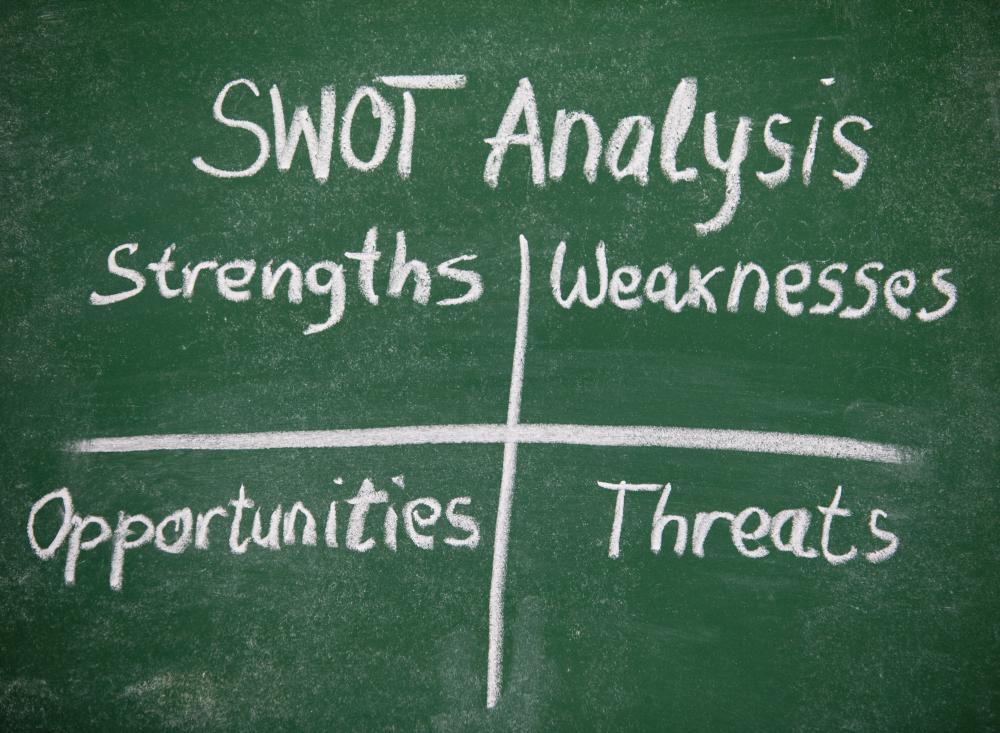At WiseGEEK, we're committed to delivering accurate, trustworthy information. Our expert-authored content is rigorously fact-checked and sourced from credible authorities. Discover how we uphold the highest standards in providing you with reliable knowledge.
How Do I Conduct a SWOT Analysis of a University?
The SWOT analysis of a university examines the institution’s strengths, weaknesses, opportunities, and threats. Many companies use this strategic business management tool and often with great success. A university can use SWOT to assess strengths that draw students to its programs, weaknesses that create difficulties to complete services, opportunities for expanding the institution, and threats that may reduce the institution’s success. The SWOT analysis of a university often looks at other in-state institutions and prominent national educational opportunities. Creating an annual SWOT analysis is common for most educational institutions and companies.
An educational institution’s strengths may lie in its name, cost for tuition and fees, location, or even its size, reputation, faculty, or accessibility. Accreditation is another option individuals should consider when conducting the SWOT analysis of a university. The information for this section should be particular to the university. Much of the data necessary to complete the strengths section should be on the institution’s website. A call to the university's administration department may be necessary to clarify details.

Weaknesses for a university may include lack of degree programs, financial support problems, or too few faculty members. Inadequate educational resources, poor infrastructure, or lack of campus life, facilities, or other surrounding activities could be other issues at play. In short, the SWOT weaknesses can be the opposite of strengths, with a few extra items. It is best to look at the organization as a whole when conducting a SWOT analysis of a university and look at any drawback that a potential student may find a weakness. Reviewers may find themselves looking only for particular weaknesses they find important.

Opportunities are what may benefit the university either in the present or the future. These can include intellectual development projects, online degree programs, or the creation of strategic partnerships with other institutions for credit transfer. The school may grow due to resource use for programs specific to the university’s location or the establishment of leadership in a particular area as well. Educational institutions can often leverage their reputations and faculty members into these opportunities. In some cases, opportunities change over time, making this strategy both competitive and limited in its focus.

Threats in the SWOT analysis may be the shortest section though the most important to many institutions. Threats can be reduced funding or limitations in student funding, faculty members leaving for other opportunities, and competition from both traditional and online educational institutions. Large institutions may not have as many worries regarding threats if they have well-established brands.
AS FEATURED ON:
AS FEATURED ON:













Discuss this Article
Post your comments